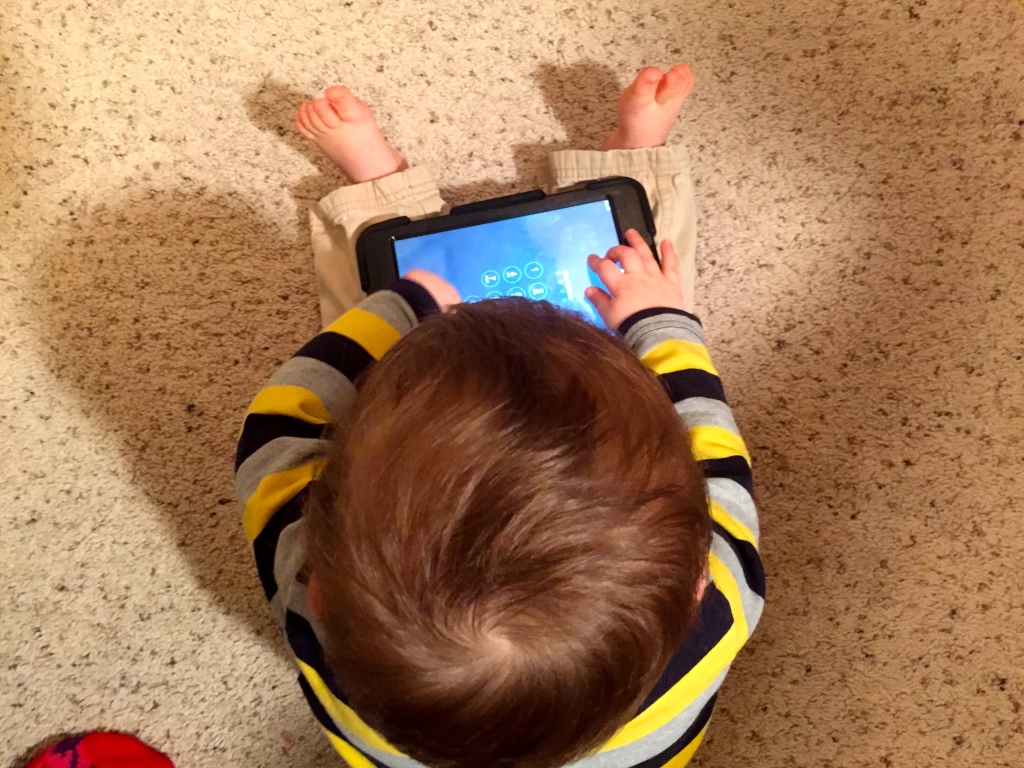I was sitting in church. My toddler had confiscated the iPad, but I wasn’t worried, because you have to have the code to unlock it.
Turns out I should have been worried.
I looked over and saw that my little beastling had somehow accessed the photos. And the photo that popped up wasn’t really something that I wanted to show off in church. It was a full body shot of a man standing there in nothing but his boxer briefs.
I frantically confiscated it and tried to hide it from view as I turned the dang pictures off. There were many such pictures on that iPad.
Scandalous, right?
Or was it? Before you declare me a horrible person with a shameful secret, let me tell you the rest of the story:
We got the iPad for my husband’s work. This was several years ago when the iPad first came out. My husband helps develop Apps and as they switched from iPod to iPad, they needed it to test them. They develop acupuncture apps, and these apps need pictures to show where each point is located. The photograph was for work. It was indeed a picture of a man in nothing but his boxer briefs, but it was in no way provocative. These photos had been shot for this specific purpose and had the man standing in many very specific positions that showed off the muscle and bone structure. My husband could then add in dots to represent the acupuncture points.
Unbeknownst to me, the iPad was equipped with a little icon that appeared on the lock screen that allowed you to look at your photos as a slide show while the iPad was still locked. (We later got rid of that feature). So, since the only photos on the iPad were those that my husband used for work, those are the ones that showed up when my toddler touched the icon in church.
So, why am I talking about the (not) scandalous pictures on my iPad?
Because, despite the fact that there was nothing shameful about the photo, I still felt the need to hide it, quickly and quietly, glancing around as I wondered if anyone had seen it, and worrying about what they might think. Because we all make judgments. We use the information that we have and we call it as we see it.
We have to make those judgment calls; those little judgments are often necessary to make daily decisions. But are those judgment calls accurate or fair? Sometimes, yes. Sometimes the situation will be exactly what it seems. Sometimes, no. And I’d venture to guess that most of the time, the answer is no. There is more to the story than what we see. There are reasons, explanations, and history that led up to the moment in time where we step in and make an observation.
I’ve met people (and I would guess that you have too) who have shifted my perspective just by telling me their story. I walk away wanting to write their narrative, to remember the words they used, the emotion exhibited when they gave certain details. I want to share the understanding I’ve gained because before I met them, I didn’t understand. Then suddenly, after hearing them, I get it.
That’s the reason we tell stories. We share our tales of pain or triumph, of fact or fiction, so that we can help each other understand. Oftentimes a book can act like that proverbial pair of shoes. We put on the shoes as we slip into the story, and we go for a walk. Maybe it’s a mile, maybe it’s ten. And hopefully at the end of it, we’ve gained a little bit of compassion and sloughed off one or two of our snap judgments.
There’s always more to the story, and as authors, we can use that. Imagine a character and a situation that interests you, one that’s strange and dramatic and pulls at your heart. Now tell me how they got there. Tell me the rest of the story.

Very insightful and fairly targets the ‘judging before you know all the facts’ issue that most of us have. It may be natural to do it, but we need to be ever cognizant of this human survival ‘fault’.
Very true. It’s easy to excuse behavior that we consider normal. But that doesn’t mean we shouldn’t try to be better.